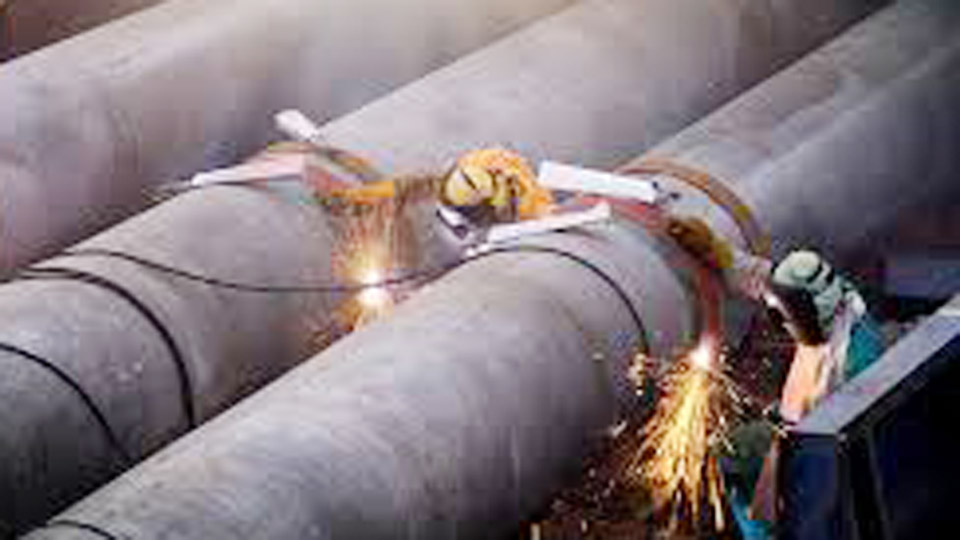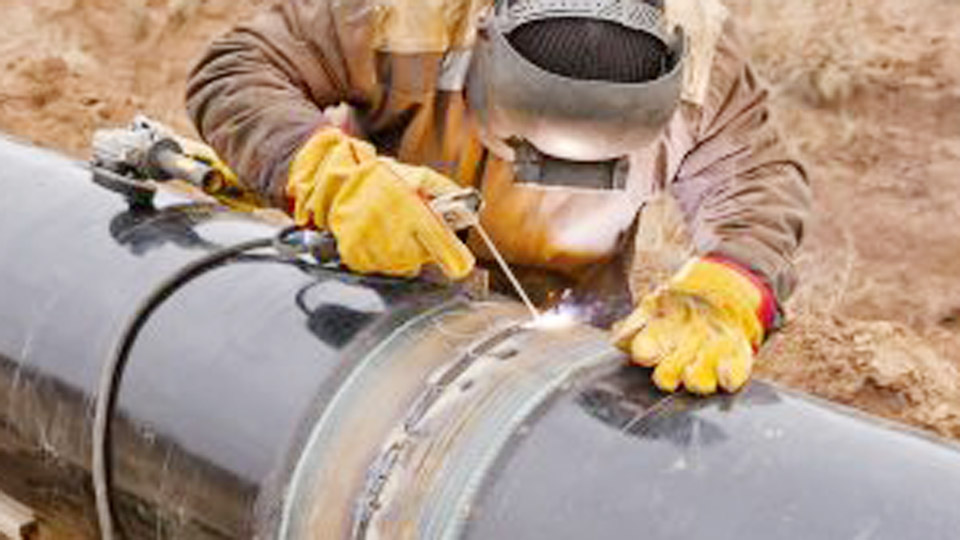When I first started learning about welding, one question kept coming up over and over again—how much can a pipeline welder really make per hour? If you’ve ever looked at welding as a career path, or you’re just curious about the earning potential, you’re not alone.

Image by red-d-arc
I’ve worked in the field, spoken to a lot of welders, and taken a deep dive into the actual numbers. And let me tell you, the earning potential of a pipeline welder can be pretty impressive—especially when you factor in overtime, travel, and certain high-risk jobs.
I’m going to walk you through everything I’ve learned about how much pipeline welders make an hour. We’ll talk about what affects their pay, how the location plays a huge role, what kind of certifications help boost your income, and even what a day in the life of a pipeline welder looks like. If you’re wondering whether this career is worth it, I hope this gives you a full picture.
Basics of Pipeline Welding Pay
Pipeline welding isn’t your average welding job. It comes with more pressure, higher risk, and a need for perfection. These are welds that carry gas, oil, and other vital materials across thousands of miles.
Any mistake can cause environmental damage, safety hazards, or massive financial losses. Because of this responsibility, the pay is often higher than other welding roles.
The average hourly wage for a pipeline welder in the USA falls between $30 to $85 an hour, but that’s just a general range.
Some make more, especially if they’re working in high-demand regions or specialized sectors like underwater pipeline welding or remote oil fields.
What Affects the Hourly Pay of a Pipeline Welder?
There’s no fixed rate for every welder. Pay rates change based on several key factors, and I’ve seen how these can really impact earnings.
Experience Level
Welders with years under their belt usually make more. If you’re just starting out, you might earn closer to the $30 to $40 range.
With 5–10 years of experience and solid certifications, you could be looking at $50+ an hour. If you’re an elite-level welder or work in dangerous locations, even more.
Location and State Differences
Where you work really matters. States with active oil and gas pipelines often pay more. Here’s a quick look at hourly wage ranges in a few key states:
| State | Average Hourly Pay | High-End Pay Potential |
|---|---|---|
| Texas | $38–$65 | $75+ |
| North Dakota | $40–$70 | $85+ |
| Alaska | $45–$75 | $90+ |
| Louisiana | $35–$60 | $70+ |
| Pennsylvania | $32–$55 | $65+ |
I worked a contract in Texas once, and between base pay and overtime, the checks added up fast.
Certifications and Qualifications
You can’t just walk onto a pipeline site with a basic welding certificate. Most employers require specific qualifications like:
- 6G certification
- AWS (American Welding Society) certification
- API 1104 (specific to pipeline welding)
- NCCER certification
Each of these boosts your credibility and earning power. When I added the 6G cert to my resume, the job offers came in quicker—and they offered better rates.
Union vs Non-Union Work
Union pipeline welders often have better hourly pay and benefits. Non-union jobs can still pay well, especially if you’re freelancing or working remote jobs, but they might not come with healthcare, retirement plans, or job security.
Union jobs might pay $40 to $60 an hour with guaranteed overtime. Non-union could start lower but jump high depending on demand.
Type of Pipeline Project
Different projects pay differently. For example:
- Oil pipelines usually pay higher than water pipelines.
- Natural gas pipelines can come with risk bonuses.
- Offshore or underwater pipeline welding can double your pay because of the conditions.
Working Hours and Overtime Pay
One of the best things I found about pipeline welding is the overtime. Many projects run long shifts—10 to 14 hours a day, often 6 days a week. That adds up quickly.
Let’s say you make $50 an hour and work 60 hours a week. That’s 40 hours regular, plus 20 hours overtime (at time-and-a-half). Here’s what that looks like:
- 40 hours × $50 = $2,000
- 20 overtime hours × $75 = $1,500
- Weekly total = $3,500
Do that for 6 weeks, and you’re looking at $21,000 before taxes. That’s why many welders work a few months straight and then take a break.
Freelance Pipeline Welding vs Full-Time Employment
There are two major paths in this career: working full-time for a company, or going freelance/contract-based.
Full-Time Employment
- Steady income
- Benefits like health insurance
- Predictable work schedule
- Pay around $30–$55 an hour
Freelance/Contract Work
- Potential to earn $70+ per hour
- Often includes per diem (daily travel allowance)
- More freedom but less job security
- Usually long, intense hours
Freelance work gave me a lot more control over my income, but it also meant more time on the road.
Is It Dangerous? And Does That Affect Pay?
Absolutely. Pipeline welding is considered a high-risk job. You’re often working in extreme heat or cold, in remote areas, or even on elevated platforms. I’ve worked in places where the nearest hospital was over an hour away.
Because of this, many jobs offer hazard pay or bonuses. The danger is real, but so are the rewards.
How Travel Impacts Pay
Pipeline welders often move with the job. That might mean traveling across state lines or even flying into remote areas. Companies usually cover:
- Flights or travel
- Hotel or lodging
- Daily per diem (usually $100–$200/day)
I had one job in Alaska where the per diem alone covered my living expenses, and my hourly pay was pure profit.
Is It Worth the Physical Demand?
Pipeline welding isn’t easy. It takes a toll on your body. You’re lifting heavy gear, welding in tough positions, and standing for hours. If you’re fit and focused, it can be manageable.
I always say—this job will challenge you physically, but it can also set you up financially. Many welders use it to build savings, buy property, or fund their own business later on.
How Long Do Pipeline Welding Jobs Last?
Most are project-based. You might be on a job for 3 months, 6 months, or even a year. After that, you either move to the next job or take time off.
The downtime can be a blessing. Some welders work 6–8 months and take the rest of the year off. It all depends on your lifestyle and financial goals.
Highest-Paying Pipeline Welding Jobs
Here are a few of the top-earning roles I’ve come across:
- Offshore pipeline welder – up to $100/hour
- Rig welder (oil rigs) – $80–$90/hour
- Underwater welder – $100+/hour (but extremely risky)
- X-ray certified welder – $60–$80/hour
If you’re looking to push your income as high as possible, certifications and specialty training will get you there.
What Tools and Gear Do You Need?
Most welders bring their own gear. That includes:
- Welding machine (if you’re a rig welder)
- Hood and safety gear
- Welding rods and filler metal
- Tool belt and hand tools
Investing in high-quality gear can pay off. Companies take you more seriously, and your work tends to be cleaner and more efficient.
How to Start a Career as a Pipeline Welder
If you’re interested in jumping in, here’s a basic path to follow:
- Learn the trade – Get trained at a vocational school or welding program.
- Get certified – 6G certification and AWS/API 1104 are key.
- Get experience – Start with structural or industrial welding.
- Apply for pipeline jobs – Look for apprenticeships or entry-level field positions.
- Travel where the work is – Be flexible about location and schedules.
With hard work and the right training, it’s absolutely possible to earn a strong hourly wage in a few short years.
Conclusion
So, how much do pipeline welders make an hour? From everything I’ve experienced and seen, the range is broad—but the potential is huge.
If you’re making $30 an hour starting out or hitting $85+ an hour on specialty projects, this career can offer serious financial rewards.
It’s not just about the money, though. It’s about building a skill set that’s always in demand, being part of essential infrastructure projects, and creating a life that you control.
Yes, it’s physically demanding. Yes, it takes dedication. If you’re willing to put in the effort, pipeline welding can be one of the most rewarding careers out there.
If you’re someone who likes working with your hands, enjoys travel, and wants to earn a strong income, pipeline welding might just be the perfect fit.
Frequently Asked Questions
What is the starting hourly wage for a pipeline welder?
The starting pay can be around $30 to $40 per hour, depending on location, training, and certifications.
Do pipeline welders get paid overtime?
Yes, many jobs offer overtime pay, usually at time-and-a-half. This can significantly increase weekly earnings.
Can pipeline welders make six figures a year?
Absolutely. With high hourly rates and lots of overtime, many experienced pipeline welders easily make over $100,000 annually.
Do you need a certification to become a pipeline welder?
Yes, certifications like 6G and API 1104 are typically required for most pipeline welding positions.
Is pipeline welding dangerous?
It can be. You often work in remote areas, extreme temperatures, and physically demanding environments. Safety training is crucial.
Are there jobs for pipeline welders all year round?
Jobs are often seasonal or project-based, but there is usually consistent demand, especially in oil-rich regions or during pipeline expansions.
Do pipeline welders have to travel a lot?
Yes, travel is a big part of the job. Many welders move with the project, which can be a great way to see different parts of the country.
How long does it take to become a certified pipeline welder?
It typically takes 1–2 years of training and experience to become fully certified and job-ready.







